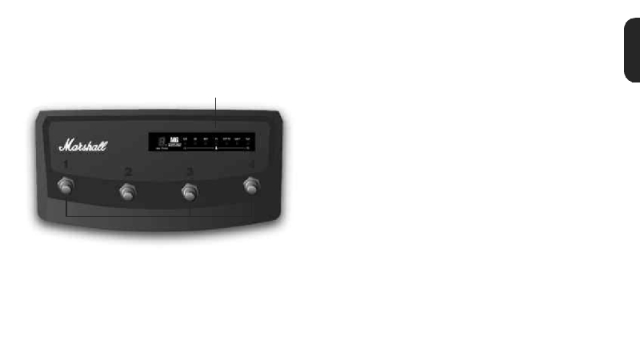
Unleashing the Sonic Symphony: A Guide to Mastering Musical Instruments and Amplification Equipment
In the vast realm of music, the harmonious fusion of musical instruments and amplification equipment plays a pivotal role in creating captivating melodies and dynamic performances. Whether you are an aspiring musician or a seasoned virtuoso, understanding the intricacies of these essential tools is instrumental in unlocking your sonic potential. Musical instruments, with their diverse range of timbres and expressive capabilities, offer us an irresistible gateway to the realm of melody and rhythm. Amplification equipment, on the other hand, serves as the catalyst that ensures your musical prowess reverberates through any venue, enchanting audiences far and wide. Join us on this enlightening journey as we delve into the world of musical instruments and amplification equipment, discovering the secrets to unleashing the sonic symphony within.
Choosing the Right Musical Instrument
When it comes to selecting a musical instrument, the options seem endless. From guitars to pianos, violins to drums, each instrument offers a unique sound and experience. To find the instrument that suits you best, it’s essential to consider your personal preferences and goals.
גיטרה חשמלית
Firstly, think about the type of music you enjoy listening to. If you gravitate towards melodic and harmonious tunes, instruments like the piano, violin, or flute might be a good fit for you. On the other hand, if you are drawn to the rhythmic beats of rock or pop music, drums or guitar might be more up your alley.
Secondly, consider your physical attributes. Some instruments require specific body characteristics to play comfortably. For instance, a smaller individual may find it easier to handle a ukulele rather than a bulky double bass. Similarly, individuals with long fingers may excel at playing the piano or guitar.
Lastly, think about your commitment level and dedication to learning. Some instruments, such as the violin or trumpet, require a significant amount of practice and patience to master, while others, like the harmonica or tambourine, can be picked up relatively quickly.
Remember, choosing the right musical instrument is a crucial step towards enjoying the process of learning and playing music. Take the time to explore different options, seek advice from professionals, and most importantly, follow your own passion and instinct.
Understanding Amplification Equipment
In order to achieve the perfect sonic symphony, it is crucial to have a deep understanding of amplification equipment. Whether you are performing on stage or recording in a studio, the right amplification equipment can make all the difference in how your musical instrument sounds.
Amplification equipment refers to the devices that amplify the sound produced by musical instruments. These devices come in various forms, such as guitar amps, keyboard amps, and PA systems. They take the sound signals from the instruments and boost their volume, allowing them to be heard clearly by the audience.
One important aspect of amplification equipment is the power rating. This indicates how much power the amplifier can deliver to the instrument. Higher power ratings are suitable for larger venues or for musicians who prefer a louder sound. On the other hand, lower power ratings are more suitable for smaller venues or for musicians who prefer a more subtle sound.

Additionally, amplification equipment often includes tone controls that allow musicians to adjust the frequency response of their instruments. This enables them to fine-tune the sound to their liking and achieve the desired tone. Common tone controls include bass, midrange, and treble controls, which can enhance or reduce specific frequencies in the sound.
Understanding amplification equipment is essential for any musician looking to enhance their sound. By selecting the right equipment and utilizing its features effectively, musicians can elevate their performances and create an unforgettable sonic experience for their audience.
Mastering the Art of Amplification
In the world of music, the power of amplification cannot be underestimated. It is the key that unlocks the true potential of musical instruments. Whether you’re a guitarist, a keyboardist, or a vocalist, understanding how to harness the power of amplification will take your performances to the next level.
When it comes to amplifying your musical instrument, the first step is to choose the right equipment. Each instrument has its own unique characteristics and sound, and finding an amplifier that complements these qualities is essential. Research various amplification options, and take the time to listen to demos or try out different models to find the perfect match for your instrument.
Once you have the right amplifier, it’s time to delve into the world of settings and controls. Familiarize yourself with the equalizer, volume, and gain knobs. Experiment with different combinations to discover the optimal sound that suits your style and genre. Remember, mastering the art of amplification requires patience and experimentation, so don’t be afraid to tinker with the settings until you find the sweet spot.
Lastly, it’s important to consider the venue and the audience when amplifying your instrument. Different performance spaces require different amplification solutions. A small coffee shop gig may require a compact and portable amplifier, while a large concert venue may necessitate a more powerful and versatile setup. Adjust your amplification strategy accordingly to ensure your instrument’s sound reaches every corner of the room, captivating your audience.
In conclusion, mastering the art of amplification is a crucial aspect of becoming a skilled musician. Choose the right equipment, experiment with settings, and adapt to different performance environments. With dedication and practice, you’ll be able to unleash the sonic symphony within your musical instrument and captivate audiences with your amplified sound.



